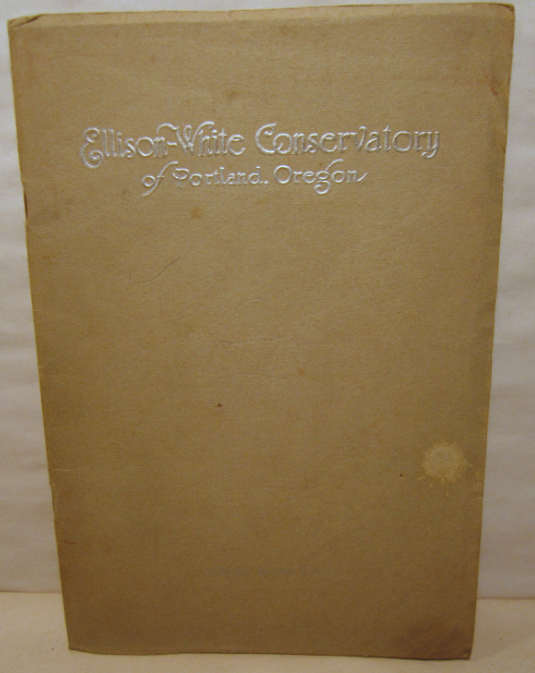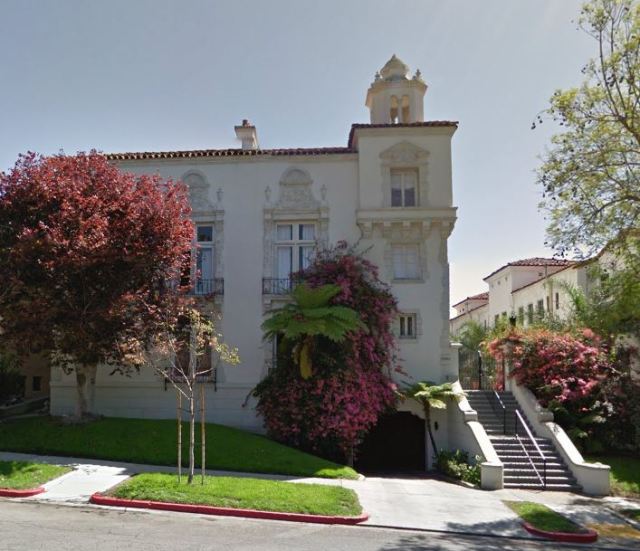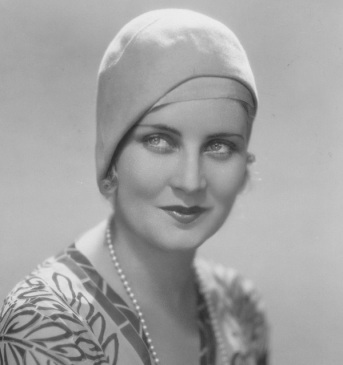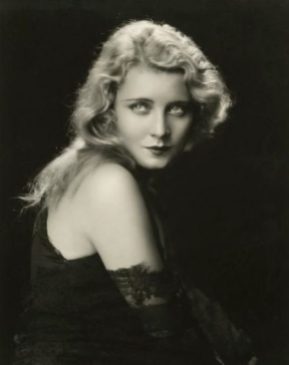
“My mother played the piano at home and sang. As early as I can remember I wished I could sing before great audiences. I loved music.” –Jeanette Loff
When I watch early films, I often wonder what became of certain individuals and where their lives took them beyond their work in the film industry. While many stay in the industry, other leave for their own reasons or depart in a twist of fate outside of their control. Though Jeanette Loff made less than 30 films, her appearance in King of Jazz (1930) sparked my interest and inspired me to research her life and career.
Janette Clarinda Lov was born in Orofino, Idaho, to Danish immigrant Marius (Maurice) Lov and Norwegian immigrant Inga Lov. Her father was a professional violinist from Copenhagen and would later own a shop. Marius and Inga had five children, including three sisters and one brother, with Janette being the eldest.
During her infancy, her family relocated often, raising Janette throughout the Pacific Northwest. According to the 1910 census, Marius was 30, Inga was 25, Janette was 4, and Janette’s younger sister, Irene, was 3 years old when the family moved to Otter Tail, Minnesota. By 1913, the family moved to Wadena, Saskatchewan, Canada, where her sister, Myrtle Dorothea, was born in 1914. While there, Janette played the piano at a little theater for one dollar per night and free admission to the show. Her mother was also a pianist, often singing as she played. When Janette was younger, her mother would sing her to sleep. As a result, Janette developed a love of music and imagined herself singing before large audiences. In fact, as Janette played the piano to accompany silent films, she wished that the actors and actresses would sing.

Jeanette and Irene
Janette expressed an interest in performing at a young age, playing the title role in the play version of Snow White and the Seven Dwarfs. By age 16, she was a lyric soprano and carried out a leading role in the operetta, Treasure Hunters.
Janette’s high school years were impacted by her family’s frequent moves, although she was excited to move closer to cities where she felt she could realize her dreams of becoming a notable performer. Though she enjoyed the closeness and friendliness of a small town like Wadena, she was excited to move to the city. She briefly attended Lewiston High School in Lewiston, Idaho, but that was soon followed by a family move to Portland, Oregon, when she was 17. There, she continued her musical education at the Ellison-White Conservatory of Music, taking singing lessons and learning how to play the pipe organ. Janette appeared singing theater prologues during vacations from school.
Freshly trained, she would play the organ at theaters in Portland under that stage name of Jan Lov. Eventually, she found herself playing the largest theater in the city. Furthermore, advertising programs announced “Jeanette Loff and the Console,” showing off her new stage name.
Jeanette’s career in films began in 1926 with a series of uncredited roles in Young April (1926), The Collegians (1926), and Uncle Tom’s Cabin (1927). Cecil B. DeMille offered her a contract and she quickly became one of Hollywood busiest starlets, often appearing in ingenue roles and being spotted around town for publicity purposes. In fact, in 1928, Jeanette was the first person to ride with Santa Claus down Hollywood Boulevard at the first Santa Claus Lane Parade in Los Angeles. During the same year, she appeared in Annapolis, Love Over Night, and Hold ‘Em Yale, among several other films.
Behind the scenes, Jeanette married a salesman named Harry Rosenbloom, though they divorced in 1929. She claimed that he became jealous and violent when watching her onscreen. She also had love affairs with producer Paul Bern, songwriter Walter O’Keefe, and actor Gilbert Roland. Jeanette showed off her soprano voice in films like Party Girl (1930) and King of Jazz (1930). She received critical acclaim for her performance opposite Douglas Fairbanks, Jr., in Party Girl, while her work as a vocalist in King of Jazz was praised in New York Times review. After her parents divorced, Jeanette’s mother and sisters Irene and Myrtle came to live with her in her Beverly Hills, California, home.
Since she felt that her roles were repetitive, she took a break from films in order to work on the stage. She remained under contract to Universal Pictures for some months but made no additional films for the studio. Jeanette relocated to New York City, appearing in musical plays and working with orchestras, prior to returning to films. Additionally, she sang with Charles “Buddy” Rogers’ Orchestra in New York. Jeanette tried to make a comeback with the drama St. Louis Woman (1934) but it was not a hit. After a few more small roles, her career stalled. Her final film roles would be in Hide-Out (1934), Flirtation (1934), and Million Dollar Baby (1934).
In her leisure, Jeanette made trips to Hawaii and San Francisco in 1935. She also traveled to Marseille, France, and New York in 1936. Later that year, she married Los Angeles producer and liquor salesman Bertram Eli Friedlob. They would remain married until her passing.
Tragically, Jeanette ingested ammonia at home on August 1, 1942. This caused severe chemical burns to her throat and mouth. She died of ammonia poisoning three days later. Coroners were unable to determine whether she ingested ammonia either accidentally or intentionally. Jeanette had been suffering from a stomach ailment and may have accidentally taken the wrong bottle of medication. While her death could not be patently ruled either accident or suicide, her family maintained that she had been murdered. Jeanette is interred at Forest Lawn Cemetery in Glendale, California, with her sister, Myrtle Dorothea.
Today, there are a few places in existence that would have been of relevance to Jeanette. In her home state of Idaho, visitors can still see her alma mater, Lewiston High School. It continues to function as a high school and stands at 1114 9th Avenue in Lewiston, Idaho.

According to the Portland Historical Society, the Ellison-White Conservatory of music started in 1915 and then changed to the Portland School of Music in the late 1930s. The school had buildings at 654 Everett Street in 1917; 1539 NE 10th St in 1939; and 931 SW King at Park Place in 1942. Unfortunately, it no longer exists today.

In 1930, Jeanette resided at 1336 N Harper Ave, West Hollywood, California. Here is a shot of the property today:

In 1940, Jeanette lived at 9233 Doheny Rd. in West Hollywood, California, with her husband, where she was poisoned. Here is the property today:

Though Jeanette’s life was cut short and there are no places dedicated to her, she can be remembered by the body of work she left behind–especially through the recent restoration of King of Jazz.
This post originally appeared in the Annette’s Classic Movie Travels column for Classic Movie Hub. View the original article here.














































Pingback: Forest Lawn Memorial Park–Glendale | Hometowns to Hollywood
Pingback: Classic Movie Travels: Nell O’Day | Classic Movie Hub Blog
Pingback: Nell O’Day | Hometowns to Hollywood